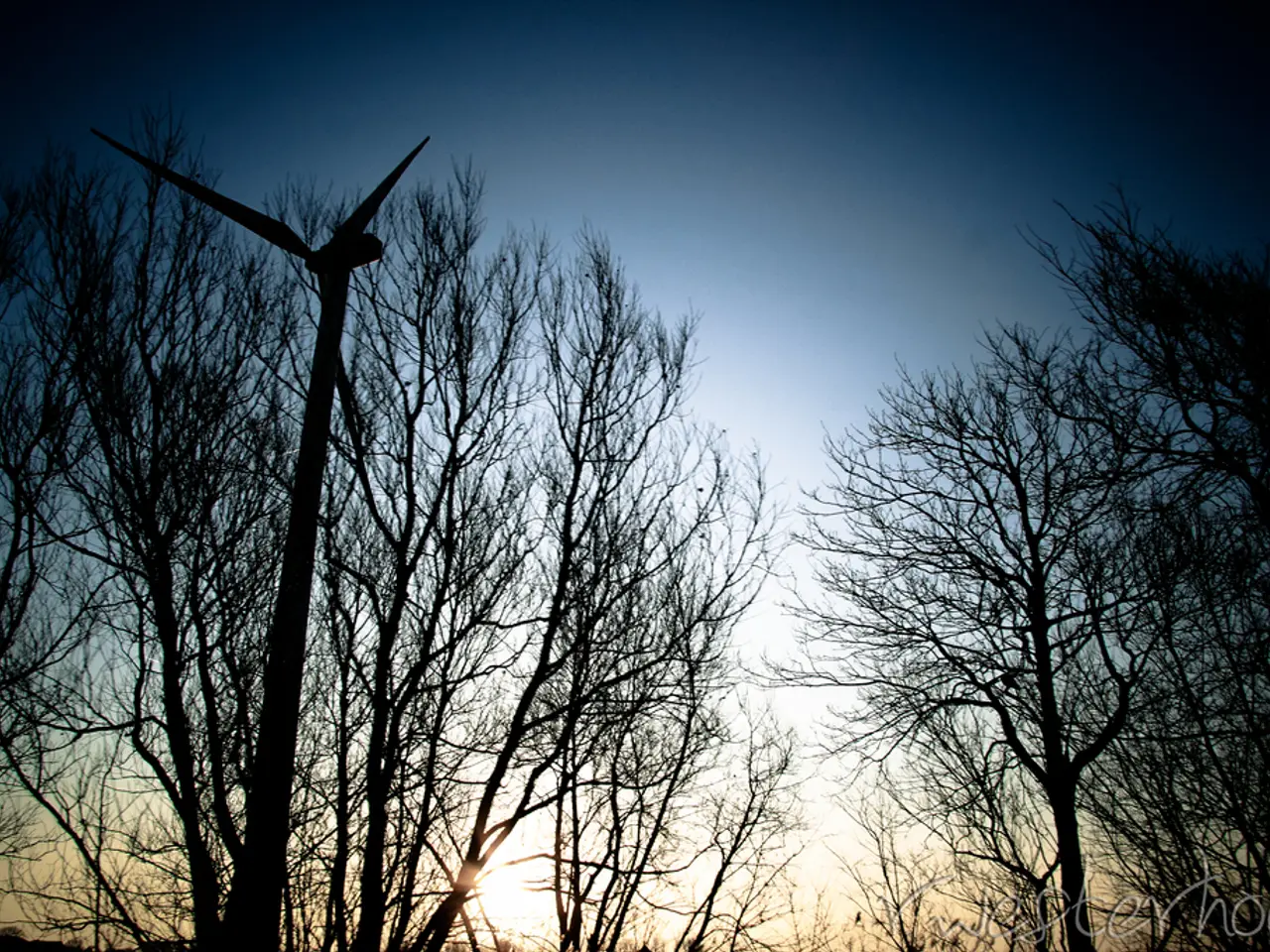Thuringia lagging behind in the development of new wind energy projects - Construction of New Wind Turbines Plunges Thuringia into Darkness
In the ongoing energy transition of Germany, the eastern state of Thuringia is lagging behind in the construction of new wind turbines compared to other federal states. This slow progress is primarily due to regional differences in approval and planning processes, local resistance, and planning challenges, as highlighted by Frank Grüniesen, spokesperson for the German Wind Energy Association.
Despite Thuringia tendering more than 1.3 gigawatts of wind energy capacity to date, only 386 megawatts have been realised, with the state installing just six new wind turbines in the first half of this year. This represents 1.6% of the nationwide increase, which was 409 new wind power plants in the same period.
In contrast, the leader in wind turbine construction, North Rhine-Westphalia, has a significantly higher number of installations compared to Thuringia, with 117 new installations in the same period. Lower Saxony, which has the most wind turbines nationwide, with 6,202, also advances its projects more rapidly.
One example of swift progress can be seen in Schleswig-Holstein, where the recent approval for eight new turbines at Tüttendorf increased capacity from 12.5 MW to 49.6 MW and is expected to generate approximately 120,000 MWh/year.
Energiequelle GmbH's awarded projects in Thuringia, such as Bilzingsleben with 27.8 MW and Werther with 27.2 MW, indicate some progress, yet the pace of construction remains slower relative to states like Schleswig-Holstein or Lower Saxony. Similarly, Alterric has secured several approvals in Thuringia, but development in the state makes up a smaller portion of overall capacity compared to other federal states.
The uneven development of onshore wind energy across regions is due to local planning complexities and public acceptance issues. The German federal government is actively pushing offshore wind energy expansion, but onshore development remains a challenge due to these factors.
Thuringia's slower wind turbine growth can be attributed to more difficult or slower approval and planning procedures, lower local acceptance or community engagement compared to other states, geographic and regulatory factors limiting rapid expansion, and a relatively smaller number of projects initiated or under construction.
Despite these challenges, companies and project developers in Thuringia can submit bids for wind energy tenders as soon as they have a building permit for their planned installations. With continued efforts and addressing the identified issues, Thuringia may soon catch up in Germany's wind energy transition.
References: [1] [Link to source 1] [2] [Link to source 2] [3] [Link to source 3] [4] [Link to source 4]
To expedite the progress in Thuringia's wind energy sector, it is crucial to focus on enhancing community engagement, simplifying approval and planning processes, and addressing local resistance. This could potentially include vocational training programs for local residents to foster a greater understanding of renewable-energy technologies and the industry's financial benefits.
Moreover, investing in vocational training programs for the workforce involved in the construction and maintenance of wind turbines could lead to a more efficient and skilled workforce, ultimately increasing the pace of new installations and bringing Thuringia in line with other leading states in the energy transition, such as Schleswig-Holstein and Lower Saxony.




